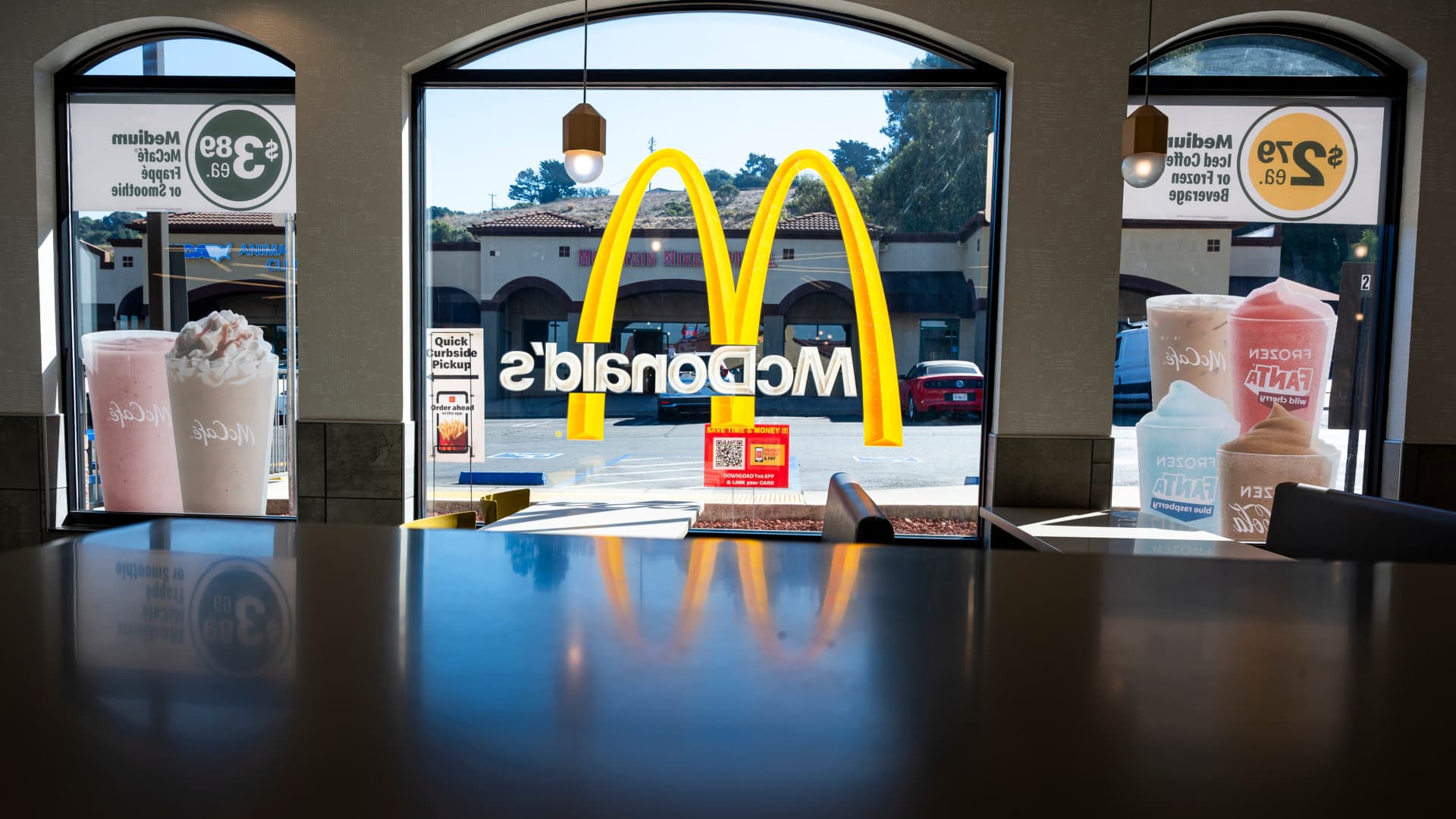
A McDonald’s location in El Sobrante, California, photographed on October 23, 2024.
David Paul Morris | Bloomberg | Getty Images
Entering the new year with challenges and exiting with potential hope is the vision restaurant leaders hold for 2025 after a tumultuous beginning marked by severe weather, wildfires, and cautious consumer behavior.
Several fast-food establishments, such as Restaurant Brands’ Burger King and Popeyes >reported an uptick in sales during the fourth quarter as their value-driven offerings attracted customers who previously preferred home cooking. Even McDonald’s experienced a rise in domestic visits, even though U.S. same-store sales dipped by 1.4%.
However, this trend took a downturn in January.
“The year commenced with some overall challenges for industry traffic, intensified by notable weather disruptions across the United States,” stated Wendy’s CFO Kenneth Cook during the company’s recent conference call.
Fast-food net sales in January increased by 3.4% compared to the same month in the previous year. However, this growth showed a slight decline from December’s 4.9%. According to restaurant market research firm Revenue Management Solutions, traffic for breakfast and lunch fell during that month.
Subway’s U.S. President Doug Fry commented, “Consumers appear to be cautious. They are looking to see how the economy progresses, but they remain discerning regarding quality, portion sizes, and the overall value of their meals.”
As the year advances, both traffic and sales are predicted to improve, partly due to favorable comparisons to last year’s drops. The restaurant industry experienced negative traffic every month except November, and sales suffered during the summer months, which are usually peak times for dining establishments.
“We anticipate that year-over-year comparisons will improve heading into the summer months,” shared Restaurant Brands CFO Sami Siddiqui.
January Challenges
A customer outside a Chipotle in New York City holds a takeout bag on January 12, 2024.
Angus Mordant | Bloomberg | Getty Images
While January traditionally brings lower temperatures, this year also faced wildfires in Los Angeles and heightened uncertainty following the inauguration of President Donald Trump.
Chipotle Mexican Grill reported that the wildfires negatively impacted its January same-store traffic growth by about 4% or 400 basis points.
Overall, traffic to Chipotle restaurants with a year or more of operation dropped 2% in January compared to the prior year, influenced by the adverse weather and New Year’s Day falling on a Wednesday. CFO Adam Rymer indicated that the company expects the first-quarter same-store sales to be roughly flat.
Looking ahead to the second quarter, Chipotle cautions of weaker same-store sales due to comparisons with last year’s successful promotions. While stronger sales are anticipated in the latter half of the year, the company’s dim outlook for the coming months resulted in a 4% stock decline.
At present, the restaurant sector does not foresee significant repercussions from the trade tensions initiated by the Trump administration. Chipotle, which sources about half of its avocado supply from Mexico, downplayed concerns regarding how the current suspension of 25% tariffs could inflate food prices. The company, along with Wendy’s and McDonald’s, did not incorporate potential impacts from the new 10% tariffs on China and possible levies on Mexico and Canada in its forecasts.
Nonetheless, consumer concerns regarding tariffs and their financial implications are rising.
U.S. consumer confidence reached a seven-month low in February, as families worry about increasing prices in the coming year. Inflation rates in January were unexpectedly high, with away-from-home food prices rising by 3.4% over the past year, according to the Department of Labor.
Anticipated Recovery in the Second Half
Restaurant chains are optimistic about regaining sales momentum later this year.
For instance, McDonald’s is still navigating the aftermath of an E. coli incident associated with its Quarter Pounder burgers, which began to impact sales in mid-October. However, the fast-food leader expects demand to bounce back by the start of the second quarter, according to CEO Chris Kempczinski.
Additionally, as consumer conditions improve, McDonald’s forecasts further sales growth.
“If the broader economic climate enhances beyond our initial predictions, particularly for lower-income customers, we anticipate gaining a competitive edge over our rivals,” noted McDonald’s CFO Ian Borden.
Patrons leaving a Starbucks in New York City captured on January 14, 2025.
Angela Weiss | AFP | Getty Images
Conversely, Starbucks may require a longer duration for its recovery. The coffee chain has witnessed a decline in same-store sales for four consecutive quarters, as consumers have shifted their purchasing preferences elsewhere.
Starbucks has withheld its fiscal 2025 outlook, omitting details on expected annual sales. Nevertheless, CFO Rachel Ruggeri informed investors that earnings are projected to improve in the latter half of the fiscal year.
“[Earnings per share] is anticipated to be lowest in [the fiscal second quarter] due to seasonality, restructuring efforts, and increased investments, with year-over-year pressures intensifying during the quarter,” she commented in late January. “Earnings per share are expected to rise in the latter half of fiscal year 2025, both sequentially and compared to the year prior.”









